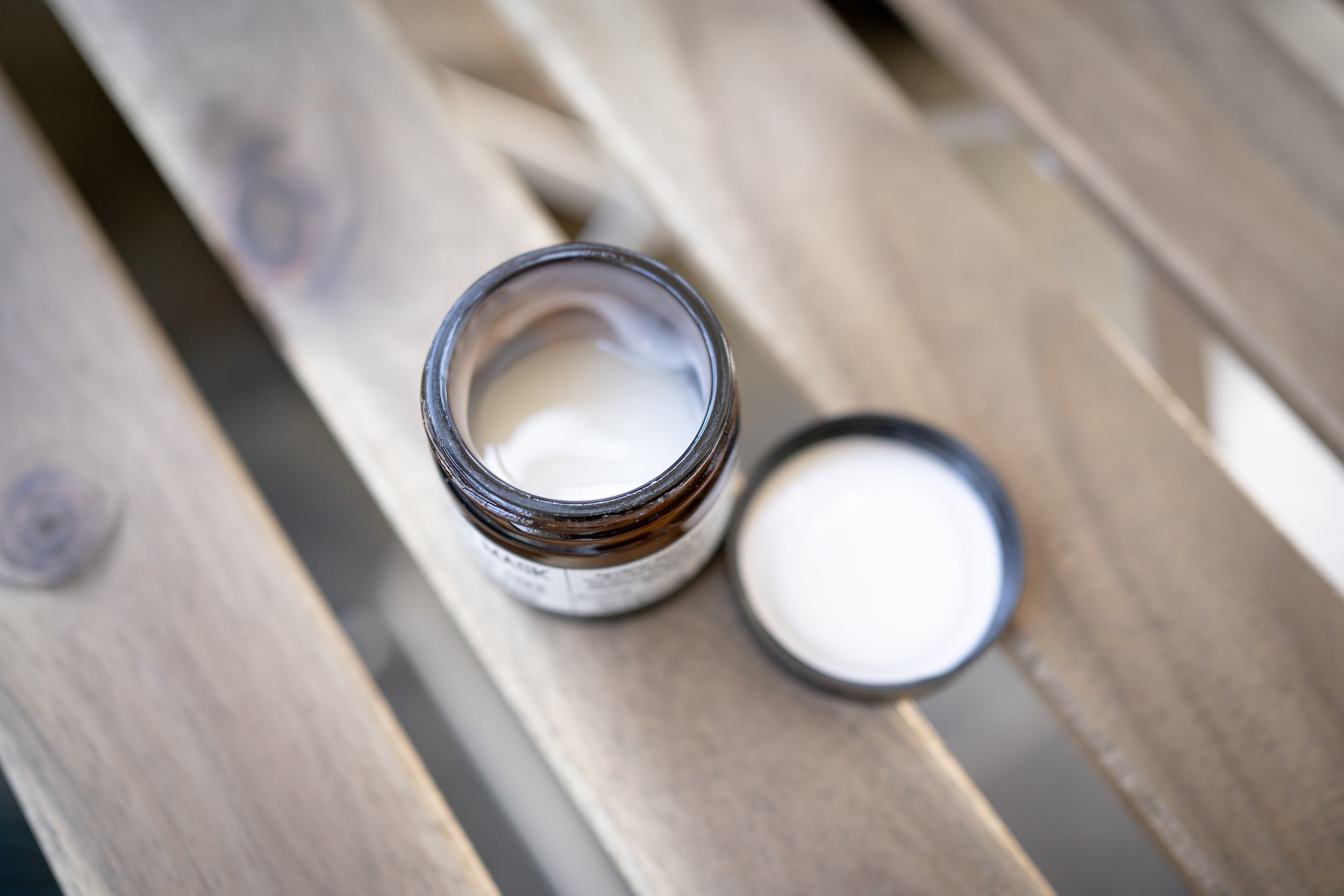The Ultimate Guide to Tattoo Removal
/It's no secret that tattoos are becoming increasingly popular. In fact, according to a 2012 Harris Poll, one in five Americans has at least one tattoo. While tattooed skin can be a great way to express oneself, sometimes people change their mind about their ink. Maybe the design was wrong for them, or maybe they just don't like it anymore.
Whatever the reason may be, if you have unwanted tattoos, there are a few things you need to know first. In this guide, we will cover everything from the process of different removal methods to what you can expect afterwards.
So whether you're thinking of getting rid of an unwanted tattoo or are just curious about the process, settle in a get comfy cause this one has it all. Keep reading!
Tattoo Removal Methods and What to Expect
The most common tattoo removal method is called laser tattoo removal. This is a process that uses lasers to break down the tattoo ink particles in tattoos. The laser treatments send short, concentrated pulses of light at the tattoo, breaking up the tattoo ink into smaller pieces. The body then flushes these pieces away over time. Usually taking more than 1 laser treatment session to remove tattoos, the duration of the process depends on the size and color of your tattoo, as well as how deep the ink is embedded in the skin.
The process of laser tattoo removal can be a bit uncomfortable, but most people report that it's not too painful. However, everyone's pain tolerance is different so it's important to consult with a board certified dermatologist. More on the pain in a bit…
Besides laser treatments, there are a few other methods available.
Dermabrasion involves sanding down the top layer of skin to remove the tattoo. This method is often used for little tattoos or for tattoos that have already begun to fade. The downside to this method is that it can cause scarring.
Surgical Excision involves surgically cutting out the tattooed area of skin. This method is usually only used for small tattoos because it can leave a permanent scar. It's also important to note that this method is not always successful and the tattoo may still be visible after surgery.
If you're considering a method of tattoo removal it's important to consult with a dermatologist or other specialist qualified in tattoo removal work. They can help you determine which method is best for you based on the size, location, and color of your tattoo.
How Much Does Tattoo Removal Hurt?
Most people report that the pain of getting a tattoo removed is more intense than the pain of getting the tattoo in the first place.
There are a few things that can affect the amount of pain you experience:
1. The size and location of the tattoo.
2. The type of procedure being used to remove the tattoo.
3. How deep the ink has been injected into the skin.
4. How old the tattoo is.
5. The color of the ink.
The best way to reduce the pain is to numb the area before the procedure. This can be done with a topical anesthetic cream or gel, or with injections of lidocaine or other topical numbing cream.
Some people report that the sensation during laser removal feels like being snapped with a rubber band or splattered with hot grease. Others say it’s more like having sandpaper rubbed over your skin.
Fortunately, the pain is only temporary and most people tolerate it well. The duration of the procedure will also depend on the size and location of the tattoo. Smaller tattoos can be removed in just a few minutes, while larger ones may take an hour or more.
How Much Does Complete Tattoo Removal Cost?
The cost of any given method will vary depending on the size of the tattoo, the method used, and the location of the ink particles. generally, excision will be the most expensive because it is a surgical procedure and will require local anesthetic. Laser treatments are the next most expensive, followed by dermabrasion.
Laser removals have become the most popular and because of this there is more information available for this process regarding cost. According to the American Society of Plastic Surgeons in 2020, the average cost of a complete removal using a laser was $423. Removing larger pieces with lots of detail and many different colored tattoo inks could cost $4,000 or more. Some providers have a flat fee for removal up to a certain size while others may charge by the square inch.
Dermabrasion may cost 100s to several thousand dollars for treatment.
Surgical Excision is the most invasive option for tattoo removal and requires local anesthetic so, it can tend to be the most expensive. Surgical removal may cost several thousand dollars.
What are the Side Effects of Tattoo Removal?
The side effects of removing a tattoo can vary depending on the method used. However, common side effects include pain, swelling, blistering, and occasionally, infection.
In addition to the potential physical side effects, the process can also be emotionally taxing. Many people feel a sense of loss or sadness after removing a tattoo. It's important to be prepared for this and to have emotional support if needed.
Be sure to consult with a dermatologist certified by the American Academy of Dermatology to discuss all potential risks and side effects.
How Long Does it Take to Remove a Tattoo?
This question depends on a number of factors, including the size and color of the tattoo, the type of laser being used, and how deep the tattoo ink is embedded in the skin. Generally speaking, small tattoos can be removed more quickly than larger ones. Black tattoos are the easiest to remove, while tattoos with lots of colors can take longer. Generally, laser removal requires multiple sessions and may take several months to completely remove the tattoo.
Dermaplaning typically requires 5 to 10 sessions for full removal. Surgical Excision typically requires 3 to 6 sessions to eliminate the tattoo.
It's important to be aware that there is no one-size-fits-all answer. The amount of time required for each session and the overall length of the process will vary from person to person.
How to Prepare for Your Tattoo Removal Procedure
First, be sure to avoid sun exposure in the weeks leading up to your appointment. For a laser session, sun exposure can increase the risk of scarring. You should also avoid using any creams or lotions on the area that will be treated. This will help ensure that the laser can penetrate the skin and properly destroy the tattoo pigment.
On the day of your appointment, you will need to remove all jewelry from the treatment area. You will also need to remove any makeup or lotion. You may be given a gown to wear during the procedure.
If you have chosen laser treatments, for your tattoo removal method, the laser will be applied to the treatment area and you may feel a burning sensation. Some people report feeling like they are being snapped with a rubber band. However, most people find the procedure to be relatively painless.
After the procedure, you may experience some swelling and redness in the treated area. These symptoms generally resolve within a few days.
Here are a few other tips to be prepared:
Be sure to consult with a dermatologist or other medical professional who is experienced in the method you choose. They will be able to give you a better idea of what to expect and how many sessions you may need.
Be aware of the potential risks and side effects. Make sure you are prepared for any physical or emotional side effects that may occur.
Plan ahead and make arrangements for time off work or school after your procedure. You may need several days to recover from the treatment.
Eat a good meal a few hours before the appointment and get a good nights sleep the evening before your appointment
Prepare yourself mentally and emotionally for the process. Removal of a tattoo can be a difficult experience, so be sure to have support from your friends or family members if needed.
Being prepared for tattoo removal can actually be very similar to preparing for getting a tattoo I wrote an article all about that, you can read about that by clicking here
Recovering After your Tattoo Removal Procedure
Here are a few tips to help you with a quick recovery:
1. Keep the area clean and dry. Make sure to wash the area with soap and water and dry it thoroughly. You may need to apply a bandage or wrap to the area to keep it clean.
2. Apply a cold compress to the area. A cold compress can help reduce swelling and pain.
3. Take ibuprofen if needed. Ibuprofen can help reduce swelling and pain.
4. Follow up with your doctor. Make sure to follow up with your doctor to ensure that your skin is healing properly.
Some people experience swelling and redness in the treated area after laser surgery. This is normal and generally resolves within a few days. If you have any concerns or questions, be sure to speak with your doctor.
Follow your doctor's instructions carefully and be sure to ask any questions you may have. With proper care, you can expect a smooth and successful recovery.
Tips for Choosing a Laser Technician for Optimal Tattoo Removal
1. Ask about their experience with laser tattoo removal. Make sure they have experience in treating all types of tattoos especially if your tattoo has a wide variety of colors and/or white pigment in it.
2. Ask to see before and after photos of their previous work. This will give you a better idea of the results you can expect.
3. Ask about the safety and efficacy of their lasers. Make sure they are using a laser that is FDA approved.
4. Ask about their training and certification. Make sure the technician has been certified by the American Academy of Dermatology or another reputable organization.
5. Get referrals from friends or family members. They may be able to recommend a good technician who has provided good results.
Is Laser Tattoo Removal Permanent?
Generally, laser tattoo removal is successful in removing most tattoos. However, there is always a chance that some pigment may remain, particularly in cases of black ink tattoos. This means that the tattoo may not be completely erased, but it will be significantly faded and much less noticeable than before.
This is why it is important to consult with an experienced laser technician before undergoing laser tattoo removal. They will be able to give you a better idea of the results you can expect.
What To Do if You Have an Allergic Reaction to the Laser Treatment
If you have an adverse reaction to the laser treatment, you should seek medical help immediately.
Symptoms of an allergic reaction include:
-Hives or rash
-Itching
-Swelling of the lips, tongue, or throat
-Wheezing or difficulty breathing
-Dizziness or feeling faint
If you experience any of these symptoms, call 911 or go to the nearest emergency room. Be sure to talk to your doctor about any concerns you may have before getting started.
Can I Get My Tattoo Removed if I'm Pregnant or Breastfeeding ?
There actually isn't much research on this topic but the body's immune system can be unpredictable and this author advises avoiding it until well after your pregnancy.
Some people may experience a histamine reaction to the laser tattoo removal and this can be especially concerning while pregnant or breastfeeding. Ultimately, its best to err on the side of caution and just avoid it. Be sure to speak with your doctor before making any decisions
Will There Be Scarring After My Tattoo is Removed ?
There is always a possibility of scarring following the removal of a tattoo, though this varies depending on the method used and the individual's skin type. Some people are more prone to scarring than others, and some tattoos are more difficult to remove than others.
There are a few things you can do to minimize the chances of scarring, however. Firstly, make sure you choose a reputable and qualified laser clinic to remove your tattoo. Secondly, follow all of the post-treatment instructions carefully, including keeping the area clean and applying moisturizer regularly.
If you do experience scarring after your tattoo is removed, there are a few treatments available that can help reduce their appearance. Consult with your dermatologist to see if any of these treatments may be suitable for you.
Should I Get a Cover Up Tattoo Or Get It Removed?
The choice comes down to whether you still want to have a tattoo in that location or if you want to be tattoo free. If you can truthfully answer that question for yourself than the choice will be easy (Assuming you have discussed it with your doctor and your body's immune system is healthy)
But keep in mind there is a third option: BOTH
If you want to be rid of an old tattoo but you really want a new and awesome tattoo that will make you HAPPY it its place, you can use a combination of a laser tattoo removal treatment and tattoo cover-up done by a professional tattoo artist. This process will greatly increase the options for a cover up by first having the old tattoo lightened before getting it covered up.
Remember that it may take a several weeks to see the full effect of a laser tattoo removal treatment so wait until the fading has completely settled in before you decide if its light enough or if you should get a second pass. Consult with your tattoo artist!
Are There Any Natural Ways to Remove Tattoos Without a Laser?
There are a few different methods that people have tried over the years, but none of them are as reliable or as effective as a laser tattoo removal. Some of the methods that have been tried include using salt water, using lemon juice, and using vinegar. However, all of these methods can cause skin irritation and can be quite painful.
The only 100% effective ways to remove a tattoo is with one of the above mentioned methods. Lasers work by breaking down the ink particles which are then absorbed by the body and eliminated. The process is relatively safe and painless, and most people only require a few treatments to completely remove their tattoos.
Are Older Tattoos Easier to Remove?
In general, older tattoos are easier to remove than newer ones.
One reason for this is that tattoos tend to fade over time. As a tattoo ages, the ink begins to spread out and becomes less concentrated. This makes the tattoo easier to remove with laser treatment. In addition, older tattoos are more likely to have been done with traditional ink, which is easier to remove than modern ink.
That said, there is no guarantee that any particular design can be completely removed. In some cases, a small amount of residual ink may remain after treatment. For this reason, it is important to consult with a qualified laser technician before undergoing any type of laser treatment. They will be able to assess your individual situation and recommend the best course of action.
How Can I Speed Up the Process of Tattoo Removal?
First, make sure to keep the area clean and free of any oils or lotions. Second, avoid sun exposure, since it can slow down the healing process. Third, try to avoid scratching or picking at the area. And finally, continue to follow your doctor's instructions for aftercare.
One thing to keep in mind is that it will take a few months to see the full result of a laser tattoo removal treatment. It takes the body several weeks to process the pulverized tattoo pigment and flush it out of the skin. This means you may not see the full result until 2-3 months after the procedure.
So, it may seem counter-intuitive but if you want your removal process to go as fast as possible, it is very important to be patient and wait for the full effects of each treatment to be seen clearly.
How Can I Remove My Tattoo at Home for Free?
Allegedly, there are ways to do it at home for free. Here are a few methods people have tried
Salt: salt to hot water and soak the area in the solution for about 20 minutes. Then use a scrubbing motion to remove the ink.
Salt and Lemon juice: Soak a cotton ball in lemon juice and apply it to the skin. Leave it on for about 30 minutes, then rinse with warm water.
Aloe vera: Apply aloe vera gel to the desired area and let it sit for about an hour. Rinse with warm water.
Honey: Apply honey to the skin and let it sit for about an hour. Rinse with warm water.
There are also a number of commercial removal products available that can be purchased online or at your local drugstore. If you are going to try any of these methods Be sure to follow the instructions carefully when using these products and consult your personal physician.
Where Does the Ink Go During the Tattoo Removal Process?
The ink that is used in tattoos is removed by breaking up the pigment into small pieces. These pieces are then removed by the body's natural filtering system. The process of tattoo removal is not instantaneous, and it can take several treatments to completely remove a tattoo. The number of treatments required depends on the size, location, and depth of the tattoo.
Do Tattoos Continue To Fade After Tattoo Removal Treatments?
The fading of tattoos after a course of tattoo removal treatments is one of the most common questions that people have about the process. The good news is, yes, tattoos will fade after a course of treatments, but how much they fade will depend on a few factors, including the type of tattoo, the age of the tattoo and the size of the tattoo.
Generally speaking, tattoos will fade by about 50-60% after a course of treatments. However, some tattoos may fade by as much as 80-90% depending on the factors mentioned above. It's important to keep in mind that not everyone experiences the same level of fading, so it's best to speak with your laser technician about what you can expect.
One thing to keep in mind is that tattoos don't always completely disappear after a course of treatments. In some cases, there may be some residual pigment remaining, but this will likely fade over time. If you're concerned about this, speak with your laser technician about your options.
Can I Fade My Tattoo With Hydrogen Peroxide?
Most of the evidence for this process is anecdotal. It works by breaking down the ink and lightening the appearance of the skin. It can take a few months of treatment to see results, and may have no effect.
There are a few things to keep in mind when using hydrogen peroxide for tattoo removal. First, make sure to dilute the hydrogen peroxide before applying it to your skin. You can do this by mixing one part hydrogen peroxide with two parts water. Second, start with a small area when testing the treatment on your skin. If you experience any irritation or discomfort, stop using hydrogen peroxide and consult a doctor.
Tattoo Removal Before and After Picture Gallery
Conclusion
In this ultimate guide to tattoo removal, we have answered some of the most common questions that people have about the process. We have talked about the different methods available for removing tattoos, as well as the cost and pain factor involved. We have also discussed how long the process takes and what to expect in terms of results.
If you are considering getting a tattoo removed, it is important to do your research and weigh your options carefully. There are a number of factors to consider, including the type of tattoo, its location on the body, and how faded you want it to be.
It is also important to keep in mind that not everyone experiences the same level of fading after a course of treatments. Speak with your laser technician about what you can expect so you can make an informed decision about whether or not tattoo removal is right for you.
Tattoo removal is a personal decision that should not be taken lightly. We hope this guide has helped you in your journey to making the best decision for you.
Thanks for Reading!





































